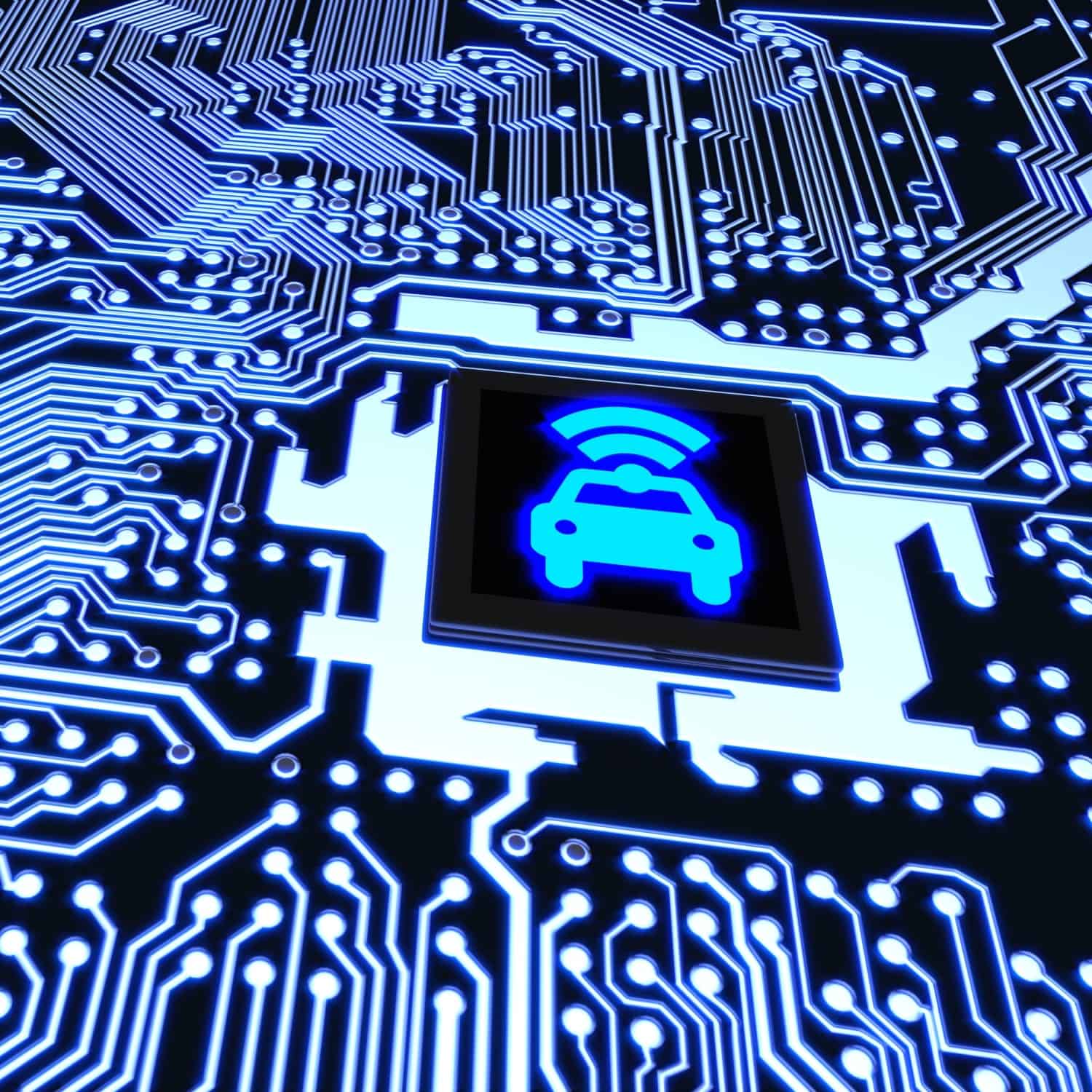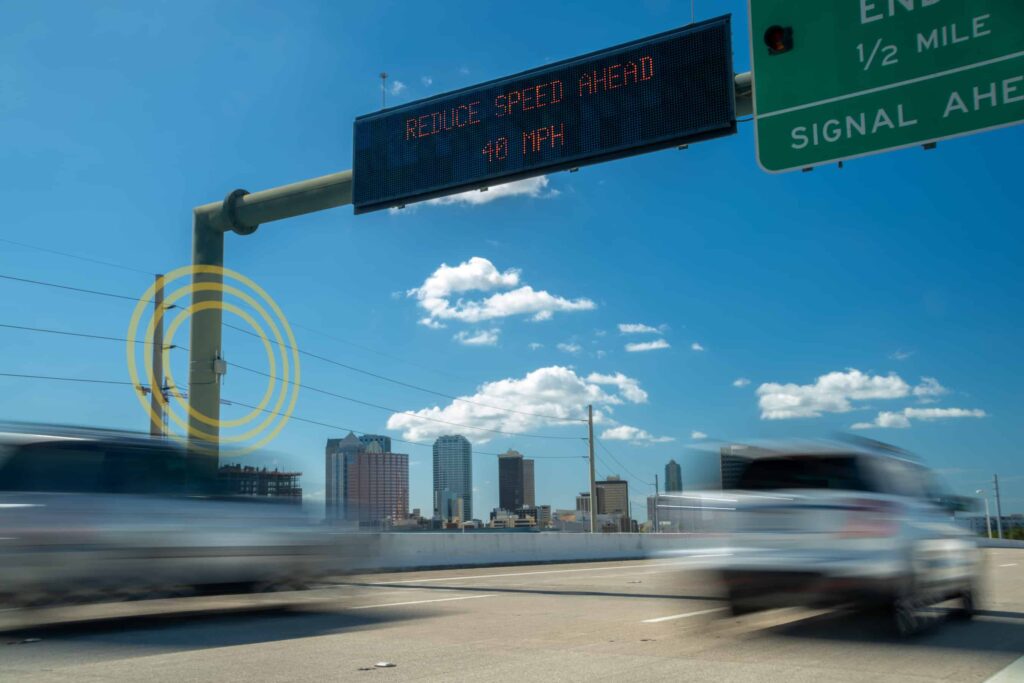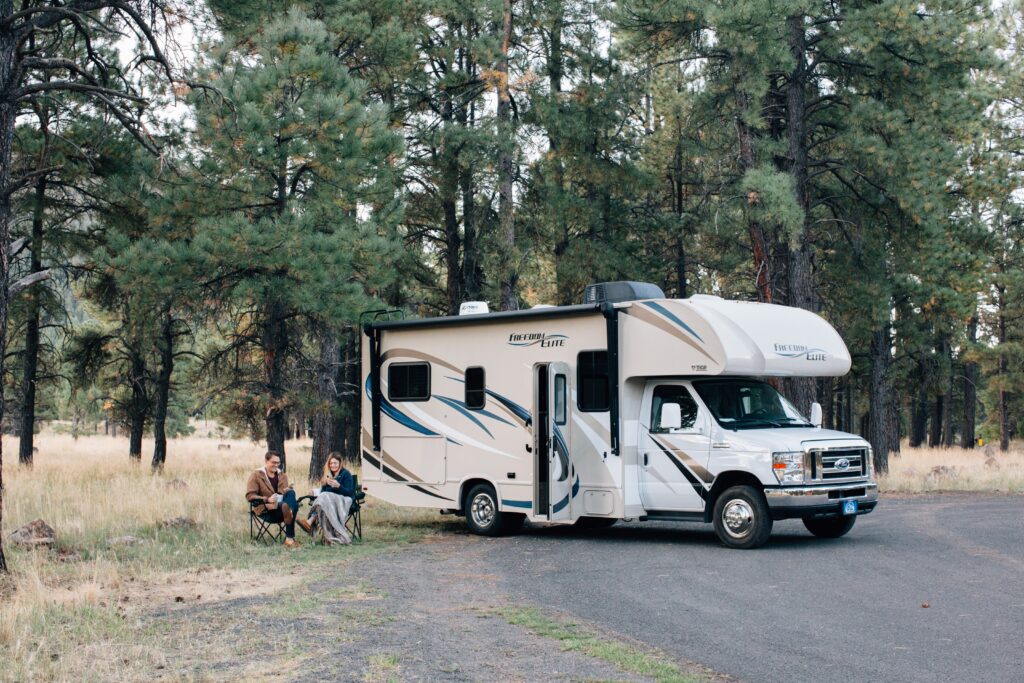
The Tiny Box That Simplifies CAN Decoding for CV Deployments
AUGUST 18, 2020 // JEFF VARICK
Integrating connected vehicle technology into your fleet vehicles isn’t as simple as plugging an onboard unit (OBU) into a power source. The OBU needs to receive certain signals from the vehicle — signals like steering wheel angles, speed, and turn signals. That data tells the OBU what the vehicle is doing so that it can relay the information data to roadside devices. The trick is getting vehicle data from the car to the OBU. Let’s explore the challenges and opportunities that affect your connected vehicle deployment.
Reading Vehicle Data
In general, the simplest way to get information is to connect directly into the analog wires you’re monitoring, such as the turn signals. But that presents a new problem: connecting the OBU to physical signals would require pulling off multiple panels around the car and routing wires throughout the vehicle to the OBU. Not only is that an invasive installation, it’s also incredibly time consuming. It makes maintenance, repairs, and uninstalls more complex and time-consuming, too. On top of that, you can’t get all the information you need from physical wires.
Using CAN to Read Vehicle Data
On the other hand, you can grab all the data you need from the CAN bus. This gives you the option of connecting the OBU to one source, in one spot, without pulling off any panels. Integrating with the CAN gives you incredible time savings on installations, but there’s a downside. Because CAN data is proprietary to the vehicle manufacturer, it has to be manually decoded. And because every vehicle make, model, and year uses a different CAN, most CV deployments require several — maybe even hundreds — of separate CAN decodings. It’s a time consuming and expensive endeavor. Once the CAN data is decoded, your OBU has to have a way of communicating the information to the roadside units. That means translating CAN data from multiple types of vehicles into one standardized CAN. There are devices on the market that can do that, but they come loaded with other functions you’ll never need, which boosts the price of those units impractically high. Fortunately, Brandmotion Solutions can help.
CAN Decoding Solutions for CV Deployments
Brandmotion Solutions provides customized CAN decoding services and a CAN translator that costs just a fraction of the price of other solutions. Our proprietary CAN aggregator is a tiny unit that translates a vehicle’s CAN messages into a standardized output. The output signal is the same across all the vehicles in your deployment, which makes it easy to communicate with roadside devices. In effect, thousands of different vehicles in a single deployment are now speaking the same language. Many vehicles have multiple CAN buses — high speed, medium speed, and low speed — but most OBUs only have one input. Brandmotion Solution’s CAN aggregator has up to three inputs, which are combined into one output to the OBU. The CAN aggregator sits on the vehicle’s CAN bus as a listen-only device. It won’t interfere with the bus’s firewall protocols, and it can’t affect the performance of the vehicle in any way. Many companies can provide CAN decoding, but no other company offers a unit that translates vehicle-specific CAN into a standardized CAN across vehicle types as affordably. The Brandmotion CAN aggregator costs a fraction of the price of other units, because other products come bundled with functions that don’t apply to CV deployment projects. Our unit does one specific job — the only job you need it to do, without all the extras you’ll never need.
Trust the Leaders in CV Deployment
Brandmotion Solution’s CAN decoding services make OBU vehicle integration simpler, faster, and less expensive. OBU maintenance and repairs are simpler, and post-project installation is a breeze. Brandmotion Solutions is the specialist that automotive technology companies rely on most for OEM-quality installation and integration. No other company offers the breadth or depth of connected vehicle work that we can provide. Whether it’s for one vehicle or a fleet of 10,000, we can meet challenges in real time and deliver a road-ready product. Start working with us today!




